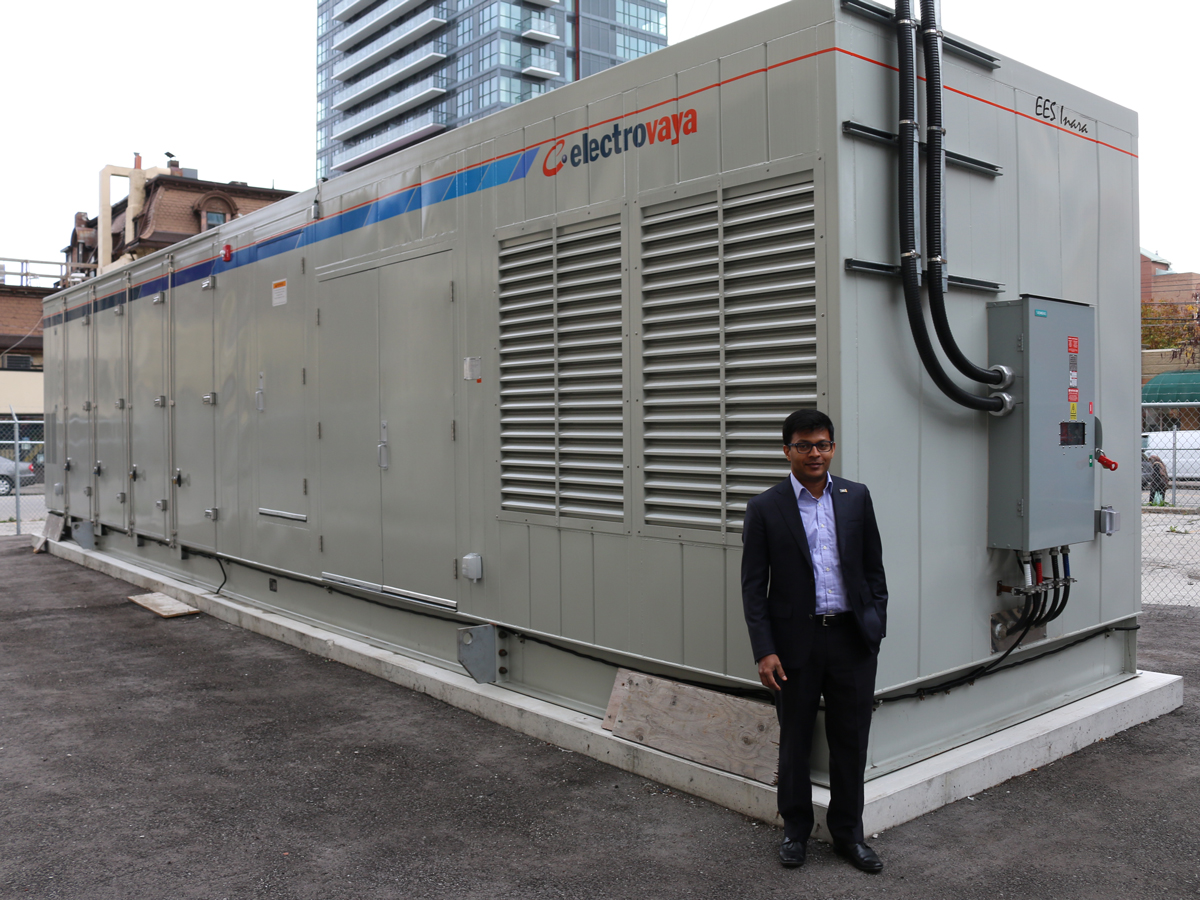We've got the power

Post doctorate research fellow Bhanu Opathella with the 150 kW battery, located at Church and Dundas.
If you’ve walked by Church and Dundas, you might have noticed a big, metal box where a parking lot used to be. No, it’s not a new neighbour with a taste for minimalist architecture: it’s a 150 kW Li-Ion battery provided by Electrovaya, with the potential to change how we store energy in Toronto.
The Centre for Urban Energy (CUE) at Ryerson University is testing this home grown battery system in collaboration with Toronto Hydro to prove how off-peak electricity can be stored. In addition to providing a learning opportunity for CUE researchers and students, the one-year project could have long-lasting impacts on energy storage in Ontario. “From just this battery, you could electrify 150 houses for four hours,” said Bhanu Opathella, post doctorate research fellow at CUE.
“It is going to prove that batteries can be used to correct problems in the power system. This can include voltage fluctuations and power mismatches: we have a lot of demand for energy in the daytime, and a lot of wind generation in the nighttime. Generally, peaks demand occurs from 6 p.m. to 7 p.m. when solar generation is also minimal. When energy generation is high, we can store it in batteries; when the demand is high, we can use that power.”
The Ryerson campus offers a rare chance for research of this nature to be conducted in an urban setting. “In a rural setting, we can use many technologies because the space is almost unlimited,” said Opathella. “Here, we’re in a limited space, but on the other hand, we have a lot of high-power demand. This is a uniquely good test case: in a highly congested environment, how to manage such a demand for power?”
With the battery installed, the one-year pilot project will begin this month. Urban energy storage has the potential to not only be a cleaner alternative to diesel generators, and to electrify buildings such as hospitals and large institutions in the downtown core but also could offer a lower-cost future for Canadian homeowners.
“When a homeowner receives their bill, it’s not only the cost of energy – it has a lot of added dollars for managing that supply of electricity. If you want to transport some goods, you have to pay for transportation, handling, and a lot of other things. The same for power: to bring that amount of units of energy to the consumer, they pay for a lot of other services. Those costs will be reduced because of this battery.”
This post originally appeared in Ryerson Today (opens in new window) .